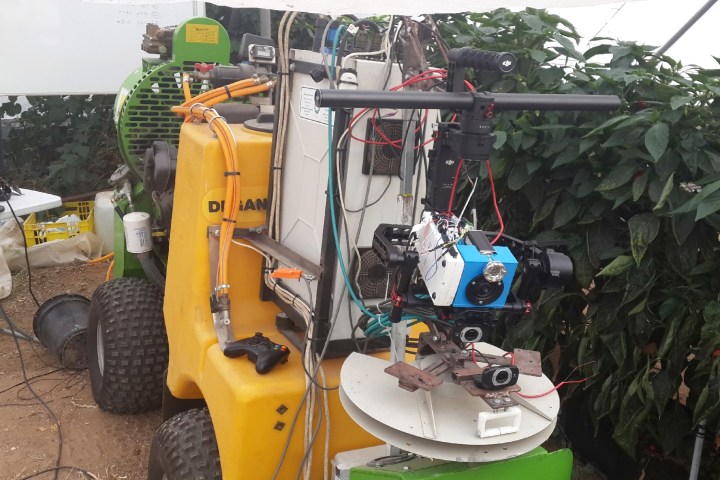
A new project, currently being developed by researchers at Israel’s Institute of Agricultural Engineering and Tel Aviv University, hints at another potential breakthrough in agriculture: a way to more accurately project future fruit yields — and it does so using sonar.
What researchers, led by Dr. Avital Bechar, are working on is an automated “AGRYbot” sonar system, described as a “robotic sonar for yield assessment and plant status evaluation.” In short, it’s a robot mounted with a sonar system, able to identify the different acoustic signatures of objects on an agricultural plot. And it’s pretty darn accurate.
By sending out sound waves and then analyzing them using smart algorithms, Dr. Bechar told Digital Trends that AGRYbot is able to recognize not just the difference between fruit trees and greenhouses, for example, but the difference between the leaves of a plant and the fruit that it potentially carries.
It can even reportedly provide accurate readings of the number of leaves on a tree, or the weight of its fruit — to within 100 grams.
“Up until now, farmers were working out this information on a hunch, or with not particularly accurate estimating tools like using the naked eye to look at a small sample,” Bechar told us. “We’ve found that these can result in up to 50 percent errors. Compared to that, our technology gives us very high accuracy with regards to the weight and yield of a plot. In addition, we can pinpoint the exact locations in a plot that give more or less yield, so that the reason for this can be examined.”
At present, Bechar’s team has a working prototype capable of operating both indoors and outdoors. It is hoped that a production line model will be available within the next several years.


